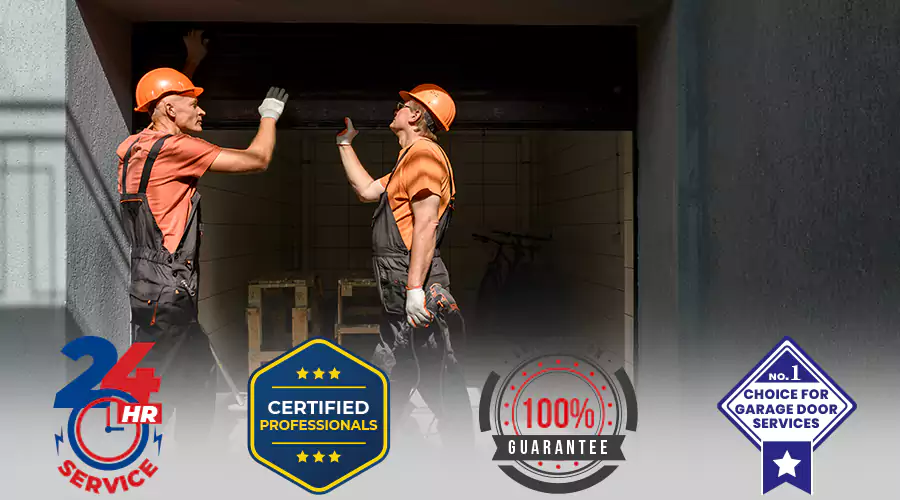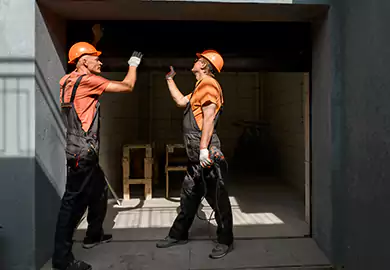
When power outages happen suddenly, everyday tasks like opening your garage door can become challenging. Don’t worry—there’s a simple way to open your garage door manually if the power goes out. It’s important for every homeowner to know how to operate their garage door without electricity, especially in emergencies where quick access to your vehicle or home is necessary.
This guide walks you through the safe steps for manually opening your garage door using the manual release system. Whether your door is stuck or you're just in a hurry, these instructions will help you manage the situation safely and effectively.
Why Knowing How to Open a Garage Door Manually Matters?
Power outages can occur unexpectedly due to storms, accidents, or technical issues. Since garage door openers depend on electricity to function, it’s crucial to understand how to disengage the automatic system and open your garage door manually. This knowledge can help you exit or enter your home during a blackout or other emergencies.
Common Situations That Require Manual Operation
- Power outages
- Malfunctioning garage door opener
- Sensor errors
- Faulty emergency release mechanism
With the right knowledge and preparation, you can confidently handle these scenarios.
Types of Garage Door Openers and Their Manual Release Mechanisms
| Opener Type | Manual Release |
|---|---|
| Chain-Drive | Red cord hanging from the rail (emergency release) |
| Belt-Drive | Similar to chain-drive; usually a red release handle |
| Screw-Drive | Manual release lever located near the motor |
Identifying your garage door opener type helps you locate the manual release system more easily.
Garage Door Types & How to Manually Open Them
| Garage Door Type | Manual Opening Method | Special Notes |
|---|---|---|
| Sectional Roll-Up | Pull red emergency release cord | May require extra effort |
| Tilt-Up (One-Piece) | Lift door from the bottom manually | Can be heavy—may need two people |
| Rolling Steel Door | Use a manual crank (usually near motor) | Look for hand crank tool |
Tools You May Need
- Ladder: To safely reach the emergency release cord
- Manual Release Cord/Handle: Usually red and hanging from the rail
- Helper (Optional): To support the door or assist with lifting
- Flashlight: Helps you see in dark or unlit areas during an outage
These tools can make the manual operation easier and safer.
Safety Tips for Manually Operating a Garage Door
- Never force the door open. Check for obstructions first.
- Don’t stand directly under the door while lifting—it could fall.
- Inspect the springs and cables. These are under high tension and can snap.
- Call a professional if the door feels unusually heavy or if you suspect any damage.
Step-by-Step: How to Manually Open Your Garage Door during a Power Outage
1. Locate the Emergency Release Cord
- Look for a red cord hanging from the opener rail.
- Use a ladder if needed to reach it.
- Pull the cord downward—this disengages the opener mechanism.
2. Lift the Garage Door Manually
- Grip the bottom of the garage door with both hands.
- Lift it slowly using your legs, not your back, to avoid injury.
- If the door feels too heavy, it might indicate you need garage door repair, so ask for help or inspect the system.
Pro Tip: Lubricate the tracks and rollers regularly to keep the door easy to lift.
3. Secure the Garage Door in the Open Position
- Use locking pliers or a C-clamp on the track above a roller to hold it open.
- Alternatively, use a sturdy object to prop the door open (only if it’s safe to do so).
4. Reconnect the Opener When Power Returns
- Once power is restored, slightly lift the door to reduce pressure.
- Pull the red cord toward the motor unit to re-engage the opener.
- Test the opener to ensure the system is working normally.
Troubleshooting Common Garage Door Problems During a Power Outage
- Stuck release cord: Apply a little lubricant or call for repair.
- Garage door too heavy: Broken springs may be the cause—don’t attempt DIY repairs.
- Door won’t stay open: Check balance and tension—springs may need adjustment.
- Manual release not working: Ensure the opener is completely disengaged.
When to Call a Professional?
While it’s possible to manually open a garage door, certain issues require expert attention:
- Broken Springs: These are dangerous to handle and require professional tools and training.
- Damaged Cables or Rollers: These components must be replaced by trained technicians.
- Motor Malfunctions: If your opener still doesn’t work after power is restored, the motor may be faulty.
Don’t risk injury—contact a qualified garage door technician for help with serious repairs.
Preventive Tips for Future Power Outages
- Keep the Release Cord Accessible: Don’t block it with shelves or stored items.
- Balance Your Garage Door: A well-balanced door is easier to lift manually.
- Install a Backup Battery: Some openers support battery backups for emergencies.
- Regular Maintenance: Lubricate moving parts and inspect for wear.
- Keep Tools Handy: Have a flashlight and step ladder easily accessible.
Conclusion
Knowing how to manually open your garage door is an essential safety skill—especially during power outages. By understanding how the manual release works and practicing basic safety measures, you can ensure you’re never locked in or out of your garage when the power goes out.
If something doesn’t feel right or your garage door doesn’t operate properly after a power outage, it’s best to contact a professional for a safe and reliable solution.


